

| Nigma walckenaeri - a new spider for Nottinghamshire | ||
| We would like to describe this
spider as the next big thing to have arrived in the
county, but don't expect to be on the look out for a two
or three inch, long-legged House Spider type, scuttling
across the living room floor on an Autumn evening. Despite it's diminutive size, Nigma walckenaeri is well and truly on the march north through Nottinghamshire, after being discovered at Worksop in 2013 and reaching Newark in 2015. In 2014, this bright green spider was recorded from an additional three sites in the south of the county, all from the Nottingham area. Peter Smith recorded it from Netherfield Ash Lagoons in March and we found several specimens at Lenton Lane Industrial Estate in August 2014. Not surpsrisingly, Tim Sexton went on to record it from Attenborough NR in October. In 2015 Nick Crouch recorded it from Newark, so it must be widespread in south Nottinghamshire now, but especially at sites anywhere along the Trent Valley. |
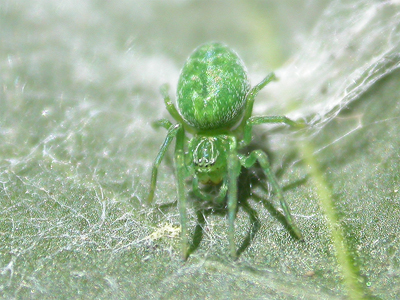 |
| ..... |
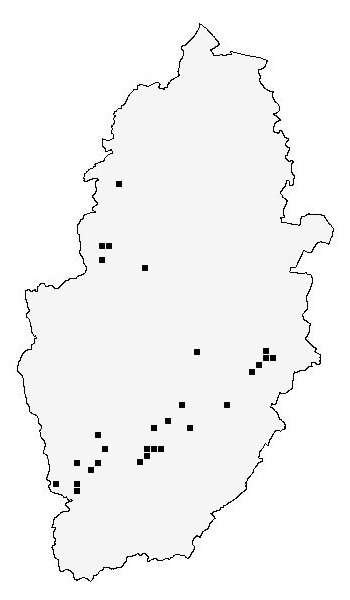 |
A history of Nigma
walckenaeri in the UK After making great strides through southern counties of the UK and having been found in neighbouring Leicestershire and South Lincolnshire several years ago, it was perhaps surprising that it has passed unnoticed here. But it obviously had, with the first Nottinghamshire record coming from the surprisingly northerly location of Worksop Priory in August 2013. Nigma walckenaeri was first recorded in Britain at Box Hill and Kew (Surrey) as long ago as 1880 or possibly 1898. It soon became established in Essex around the Thames valley, east Berkshire, Middlesex, London and the rest of Surrey. In 1993 it was found in Worcestershire (where we found it within seconds of looking for it in July 2013) Warwickshire and Gloucestershire and it has been found or recorded regularly there ever since. It can be common in gardens in many parts of its present range, but becomes more difficult to find, the further north you go. There are now records from Hertfordshire, Buckinghamshire, West Suffolk, West Norfolk, Bedfordshire, Cambridgeshire, Huntingdonshire, Northamptonshire to add to those already mentioned from Leicestershire and South Lincolnshire. (Ref: Spider Recording Scheme News March 2012, No. 72). Discovery of Nigma walckenaeri at Worksop Priory On August 16th 2013, we decided to pay a first visit of the year to Worksop Priory, where in October 2012 the Priory walls were found to hold numbers of the still un-named Leiobunum spHarvestman, we first discovered new to the UK at another Worksop location back in 2009. After walking round the Priory, we then decided to have a casual stroll and search around the old cemetery. Within a few minutes, a small spider was noticed on the underside of a Lilac leaf. Not expecting Nigma, we were amazed to find that it was, and so had quite accidentally found the first record for Nottinghamshire. |
|
| ..... | ||
| Further searching soon
revealed numerous specimens on Lilac, although Nigma
walckenaeri was more or less confined to one
particular Lilac growing along the south-facing border of
the cemetary. A more thorough search of the site, saw us
find many more adults on suitable Ivy growing up trees
and even up gravestones. In most instances, leaves found on the more sheltered sides of Ivy or Lilac were used, but webs could be spun on the underside of leaves, as well as on the upperside. A typical favoured habitat is shown in the accompanying photograph (upper right) with Ivy growing up a mature tree. The lower photograph shows the sheet web on Lilac. This is quite an extreme and more obvious web than most produced by Nigma walckenaeri. Nigma walckenaeri must be at many sites across Nottinghamshire by now. We had expected it to turn up in the south of the county, following its appearance in Leicestershire and South Lincolnshire a few years ago. |
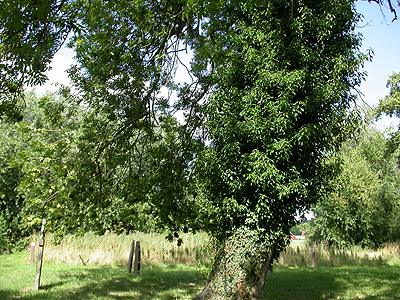 |
|
| ..... | ||
| Where to look for
Nigma walckenaeri Nigma walckenaeri is green throughout its life and spiders have been recorded well into November and December. They become adult from about August onwards, but measure just 5mm in length. They spin an indiscreet sheet web and retreat across the upper surface of a leaf and the spider is often difficult to see underneath. Plants such as Ivy, with leaves that curl slightly upwards allowing the web to be spun across are used, in avariety of locations. Ivy growing up telegraph poles, walls or tree trunks are good places to look, but in gardens, Lilac and Privet should also be checked for the spider's presence. Further records of this attractive little spider, will no doubt quickly follow. |
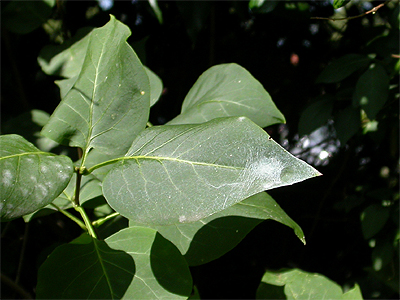 |
|
| ..... | ||
| Adult female Nigma walckenaeri (length 5mm) photographed on Lilac August 2013 | ||
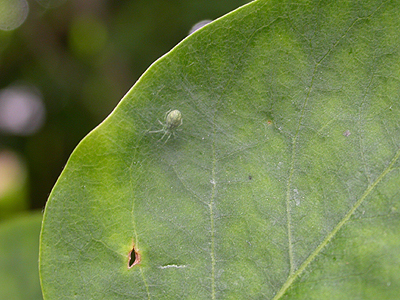 |
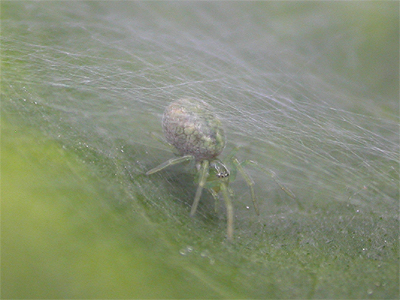 |
|
| ..... | ||
| Sub-adult Nigma walckenaeri (length 3mm) photographed during an invertebrate survey of arable farmland, Worcestershire July 2013. | ||
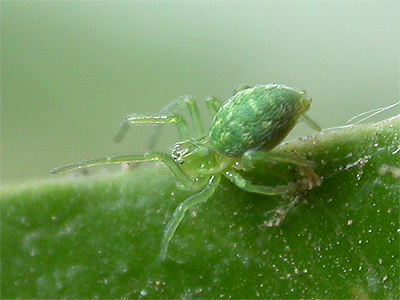 |
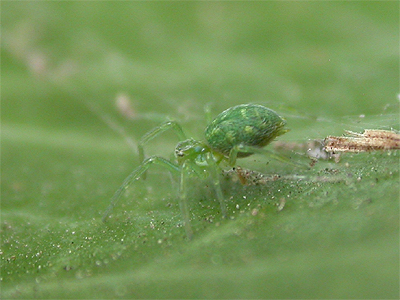 |
|